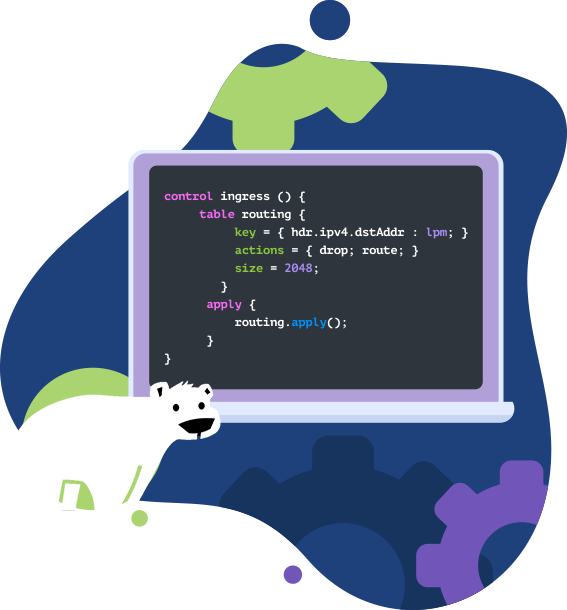P4 Open Source Programming Language
Programming Protocol-independent Packet Processors (P4) is a domain-specific language for network devices, specifying how data plane devices (switches, NICs, routers, filters, etc.) process packets.
Before P4, vendors had total control over the functionality supported in the network. And since networking silicon determined much of the possible behavior, silicon vendors controlled the rollout of new features (e.g., VXLAN), and rollouts took years.
P4 turns the traditional model on its head. Application developers and network engineers can now use P4 to implement specific behavior in the network, and changes can be made in minutes instead of years.



